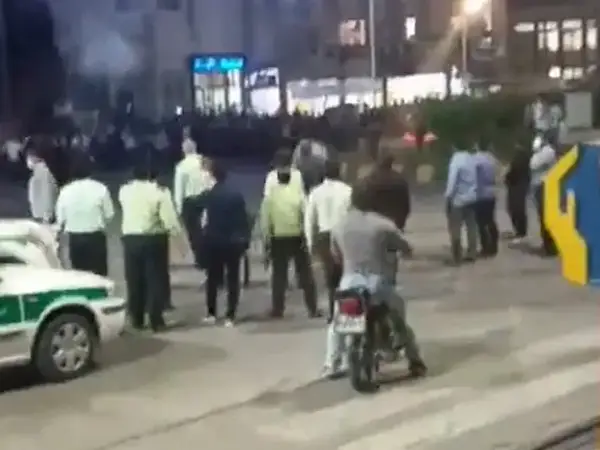Anti-government unrest in Iran triggered by a sudden rise in food prices spread further on Friday, with officials blaming foreign-based Persian-speaking media.
Protests that began in some cities in southwestern oil-rich Khuzestan Province over a week ago have now spread to many other provinces. Friday evening, protesters took to the streets in many large and small cities including Rasht (capital of the northern province of Gilan), Ardabil (capital of northwestern province of the same name), Iranshahr (in southeastern province of Sistan and Baluchestan) as well as Boroujerd (in western province of Lorestan(.
Calling the Raisi administration "agile", the secretary of Iran's Supreme National Security Council, Ali Shamkhani, said " in a tweet Friday that it will overcome all obstacles through reforming the country's "[economic] structures, optimization of resources, and people's cooperation" and accused foreign-based Persian-speaking media and those following them in Iran of being hostile and exploiting the situation for propaganda against the regime.
"The enemy wants to defeat us through satellite TV [channels], the Internet, rumors, and calls to rally and protest but is impeded by the [IRGC's] Basij militia," Commander of the Revolutionary Guards (IRGC) Hossein Salami also said on Thursday.
Members of the militia are often used to suppress anti-government protests.
The state-appointed Friday prayer imam of Khorramabad, capital of the western province of Lorestan where considerable protests took place on Thursday and Friday, also accused the BBC's Persian channel, Iran International TV, and the Persian channel of Voice of America of trying to exploit these protests.
Videos of protests are rather few as the government has slowed down or completely shut off Internet access in areas where protests have been taking place to prevent videos to be uploaded to social media.
Protesters have been chanting slogans against clerics including Supreme Leader Ali Khamenei and President Ebrahim Raisi amid heavy presence of security forces and riot police. In some of the scant footage available on social media the sound of gunfire is heard in several cities including Izeh and Andimeshk in Khuzestan, Shahr-e Kord, the capital of the western province of Chahar Mahal and Bakhtiari, and Boroujerd in the western province of Lorestan.
‘1500 Tasvir’, an opposition Twitter account, has claimed that security forces shot Omid Soltani, a 21-year-old protester, on Thursday evening in Andimeshk in Khuzestan Province.
Many people have been rushing to supermarkets after the sudden rise in flour, chicken, oil, dairy and eggs to buy food supplies including pasta, a staple for most Iranian families that cannot afford rice, only to find empty shelves. The official news agency (IRNA) on Friday claimed that protesters had looted supermarkets in some cities.
In the meantime, Iran’s battered currency dropped further on Friday, reaching 307,000 rials to one US dollar. Just two months ago the rial stood at 260,000, up from 33,000 in 2017.
Iran’s already weak economy was shaken by former US President Donald Trump’s decision in 2018 to withdraw from the Obama-era nuclear deal with Tehran known as JCPOA, and impose tough sanctions, including a ban on crude oil exports.
Tehran and Washington started negotiations after President Joe Biden took office last year, but so far the effort has not succeeded in reviving the JCPOA.
